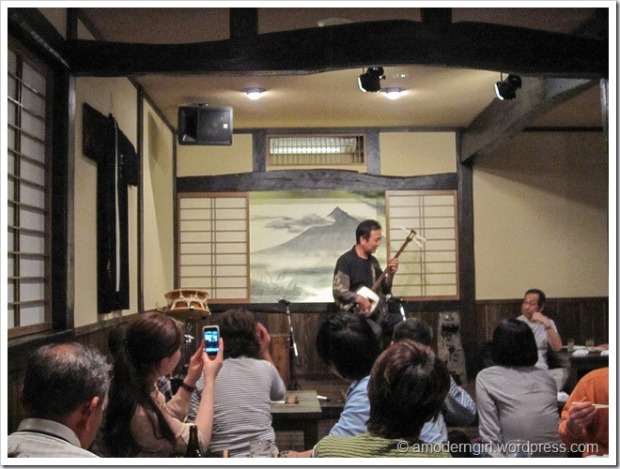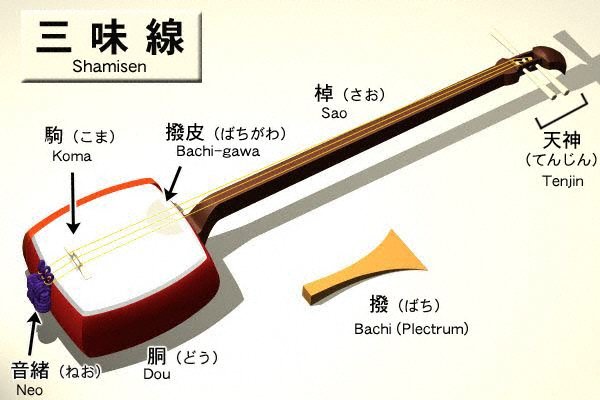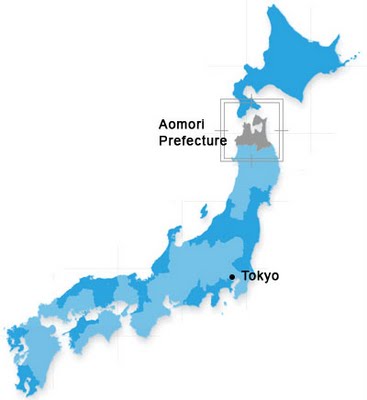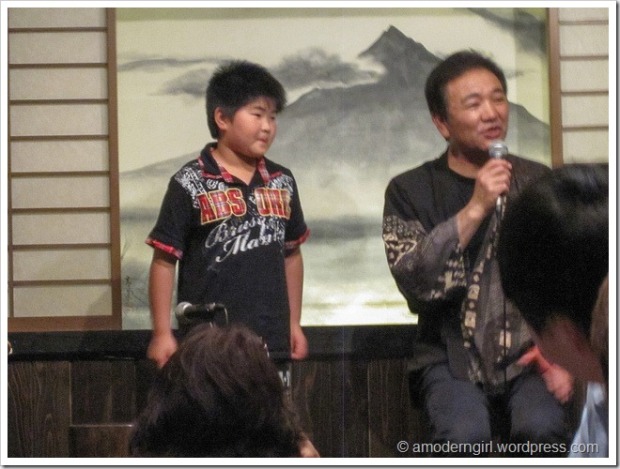Welcome to the World of Tsugaru Shamisen

I traveled north to Aomori this past spring for Golden Week, and the friend who so graciously hosted me was living in the city of Tsugaru, home of the art of Tsugaru shamisen. What, you may ask, is Tsugaru shamisen? Well, the shamisen is a three-stringed Japanese instrument played with a plectrum. You’ve probably heard shamisen music before, if you’ve ever watched movies set in Japan–the sound calls to mind the stereotypically Eastern and exotic.

Image courtesy of Iromegane
The neck of the shamisen is fretless, and the hollow body resembles a drum taught with skin. The skin used depends on the genre of music, and level of skill of the player. According to Wikipedia, student shamisens often use dog skin, and sometimes plastic, but professional instruments often use cat skin, which is more delicate and expensive. Cat skin is said to produce the best quality sound. The lowest string is purposefully laid lower at the nut of the instrument, so that it buzzes, creating a characteristic timbre known assawari (somewhat reminiscent of the “buzzing” of a sitar, which is called jivari). Traditionally, silk strings are used, but students often use nylon or ‘tetron’ strings, which last longer and are also less expensive.

Image courtesy of Dream Refuge
So, now that we know what a shamisen is, what’s so special about Tsugaru shamisen (or Tsugaru jamisen, as it is sometimes called)? Well, I’m not an expert, but from what I gather, its most distinctive characteristic is its percussiveness–the plectrum strikes the body of the instrument on each stroke. Also, unlike most other Japanese music, some Tsugaru-shamisen pieces are in triple time, though the three beats are not accentuated in the manner of Western music. Although the style originated in the town I visited, which is located in the northernmost part of Japan’s main island, it is now performed throughout the country.
Anyway, for dinner one evening, we visited a great little restaurant called Dadan, which occasionally features shamisen performances. We were treated to a number of solos and duets by a couple of artists who seem to perform there regularly. I captured a video of one of their duets:
But then, amazingly, we were treated to a number of other performances given by… other diners in the restaurant! It seems that there was some sort of shamisen competition happening the next day, and three children from the same family came up and performed for us, individually and together. The youngest must have been in elementary school. He was adorable–and very talented! I was impressed that he was able to get up and perform in front of an audience with so much composure.

Below is a snipped of a duet performed by the two older children. My camera battery was dying, so I only recorded a little of the song, but you can definitely hear the difference in style from the example above:
And for contrast, here’s a solo performed by the older man:
And a solo performed by the eldest boy, who looked like he must have been in high school:
Fun, huh? I felt genuinely luck to be able to experience such an interesting aspect of Japanese culture in such an intimate local setting. If you’re interested in hearing more shamisen music, a quick search on YouTube will turn up a lot of results–I also suggest that you take a look at my post on the Yoshida Brothers for an interesting fusion of shamisen music with modern rock.
Please take a moment to like A Modern Girl on Facebook! As always, your comments are appreciated.
Related Posts:
- Yoshida Brothers at Yoshi’s Jazz Club
- The Aomori Dog, Aomori Prefectural Art Museum
- Meet Wasao, Aomori’s Canine Celebrity
- Move Over Broadway, It’s Takarazuka Time!

Those two little kids were amazing! It somehow sounded like a bit of a rock piece ^^
And the Yoshida brothers are also really interesting, I discovered them a couple years ago and love the fusion of shamisen and rock.
I know, aren’t they talented? It’s too bad my camera ran out of batteries–the rest of their duet was quite impressive as well. Very virtuosic.
Thanks for stopping by!
We had a tsugaru-jamisen group called Abeya come and visit Univ. of Hawaii this past spring – it was really kind of incredible. Thanks very much for sharing this post – the sound of the shamisen is a wonderful thing. I’ve been practicing Okinawan sanshin for about a year, but am hoping to eventually try my hand at Japanese shamisen as well. There’s nothing like performing arts to bring the feel, the energy, the 雰囲気 of Japan(ese culture) to your living room.
Very true! I have always wanted to try the shamisen or the koto, but string instruments were never really my forte, so I suspect it would be rough going. :) I played the piano and the clarinet very seriously for many years though, so I know that making music is a wonderful thing.
Pingback: Welcome to the World of Tsugaru Shamisen « A Modern Girl / モダンガール | Letter from Ceylon
Pingback: A Modern Girl in the Japanese news! « A Modern Girl / モダンガール
Pingback: A Modern Girl’s Year in Blogging: 2012 Edition « A Modern Girl / モダンガール
Awesome! The little kids were so adorable and really good as well.
By the way, I have my own blog which focuses on Asian culture and entertainment such as video games and I wonder if it is possible for you to view it and tell me what you think about my blog: http://nynyonlinex.wordpress.com
that’s very wonderful,
I’m impressed,
visit my blog http://puguhwidodo.blogspot.com
I am from Indonesia
Pingback: Chuson-ji: Temple of the Fujiwara Clan | A Modern Girl / モダンガール
Pingback: Lost in the Archives: 10 Albums I Enjoyed in 2010 | A Modern Girl / モダンガール